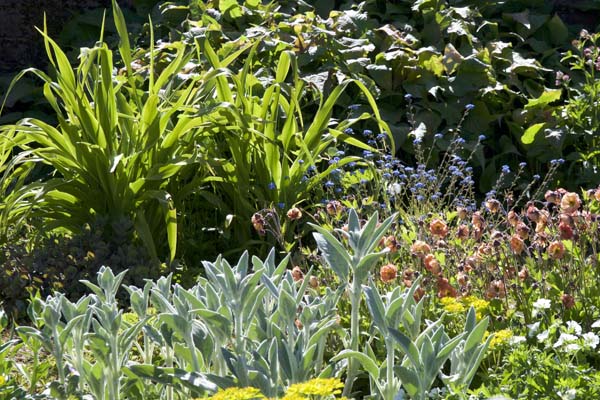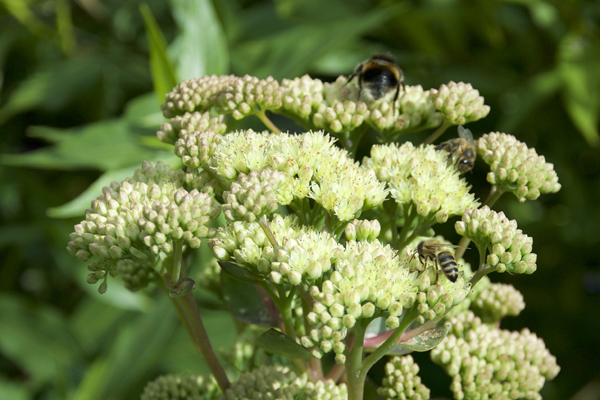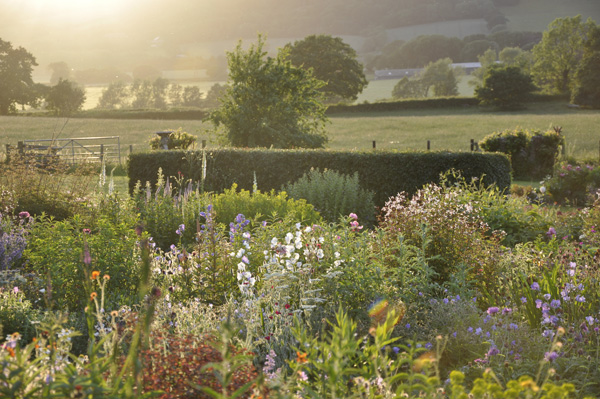Sedum
(Ice plant) Sedum, in my opinion, are amongst the most garden worthy perennials. I am referring to the big border types that tend to be the upright, not the little alpine sedums that form very short carpets. They look fabulous from the time they emerge until they die back in late autumn.
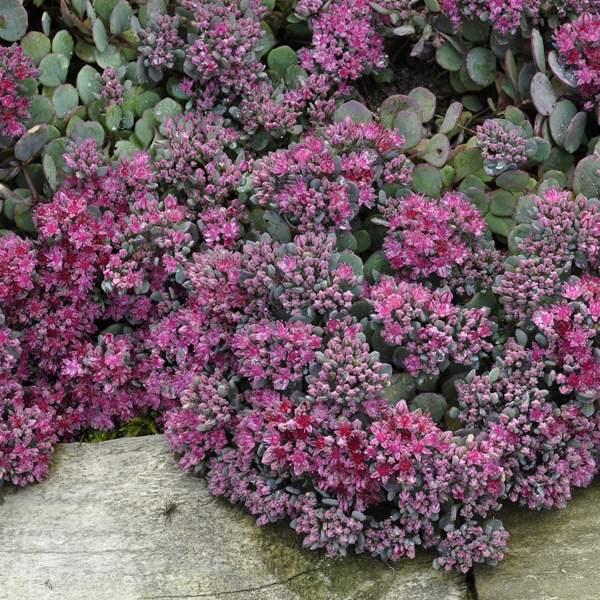
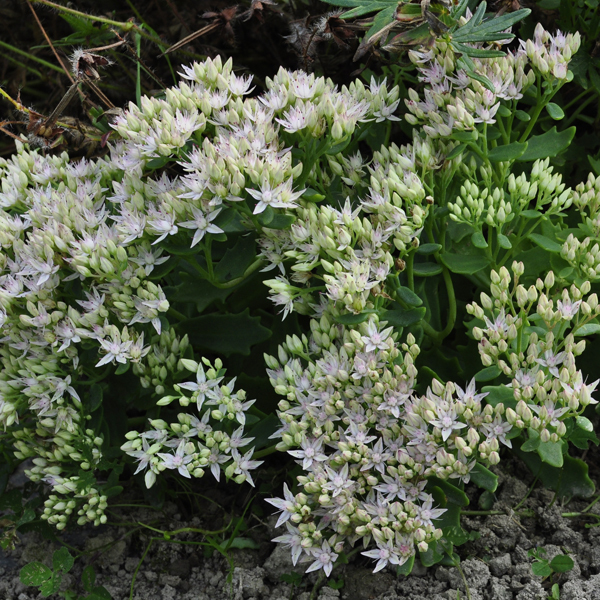
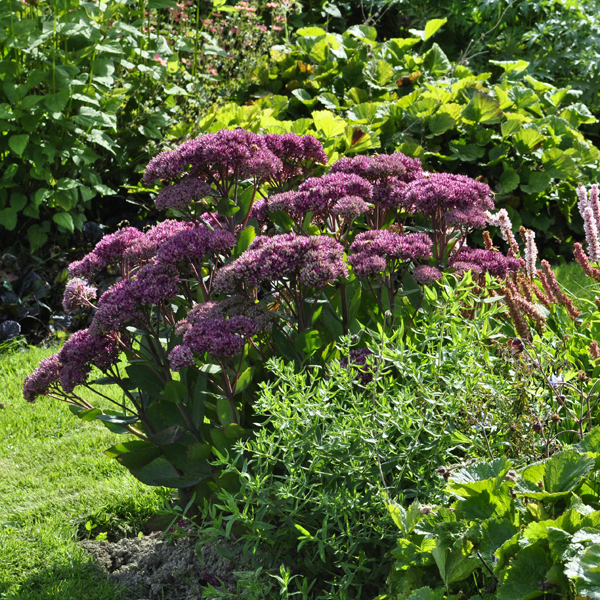
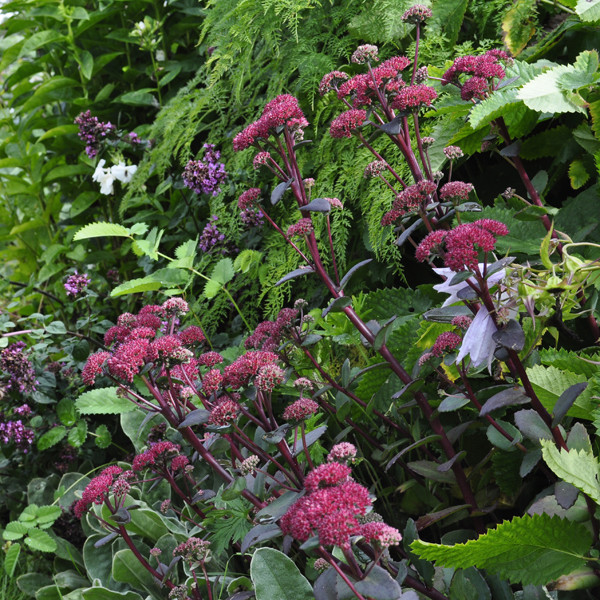
Left to right: Sedum 'Bertram Anderson', Sedum cauticola 'Coca Cola', Sedum 'Mr Goodbud', Sedum 'Red Cauli' are all good for the front of a border
Sedum Flowers
A tough, easy-to-grow bunch that bloom from late summer until the first frosts. The flowers, which range from white, yellow, pink and red, are tiny and star-like. These provide essential food for insects in late summer and during autumn. The flower heads are made up with tiny flowers that sit so tightly together they usually create broad, gently dome heads. The flower do not open all at once, but over a long period of time. This means the flower heads may be green in the early stages, become soft pink later as the flowers start to open and turn deep red by the end of the flowering period.
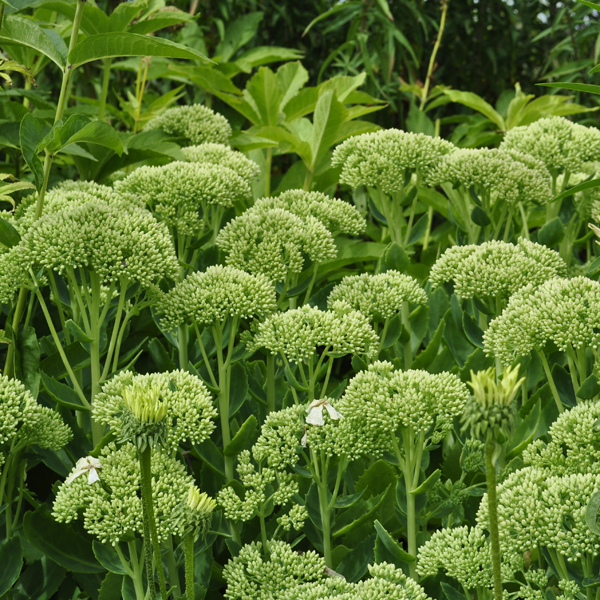
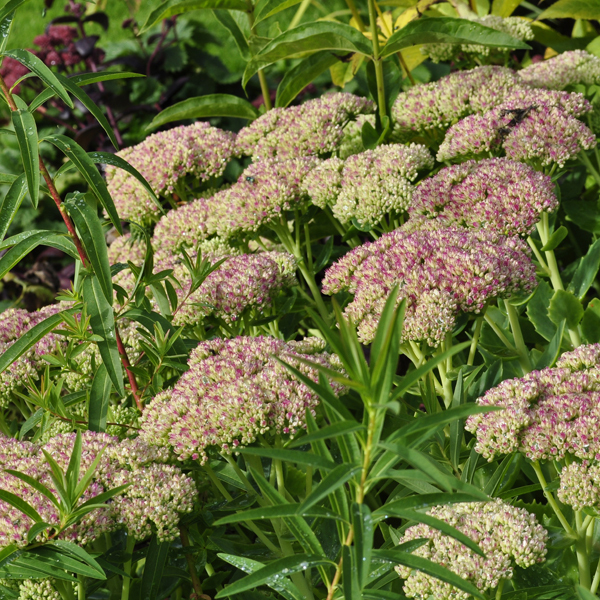
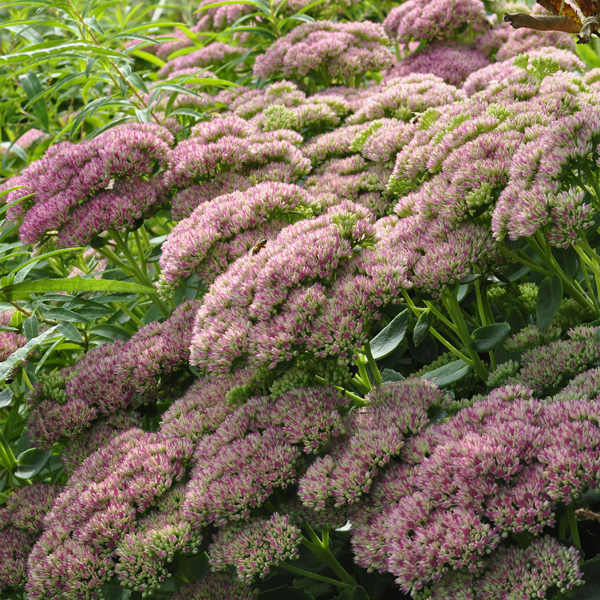
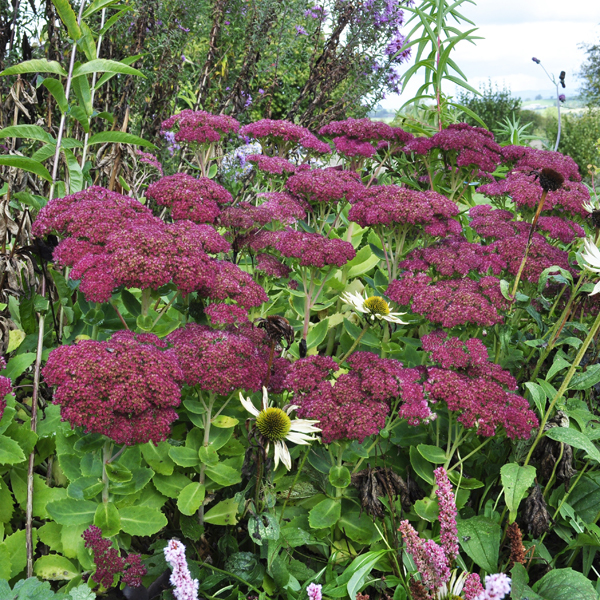
Left to right: The various flower stages of Sedum 'Herbstfreude' from July to September
Sedum Leaves
Fat and succulent, the leaves look as though they are filled with water. This is because they are designed to live in arid parts of the world. The leaves, which are usually oval and sometimes serrated along the edges, are carried on strong stems are sturdy, and are often attractively coloured and add much to the plant. Like the flowers, the leaves will often emerge one colour and deepen to another over time.
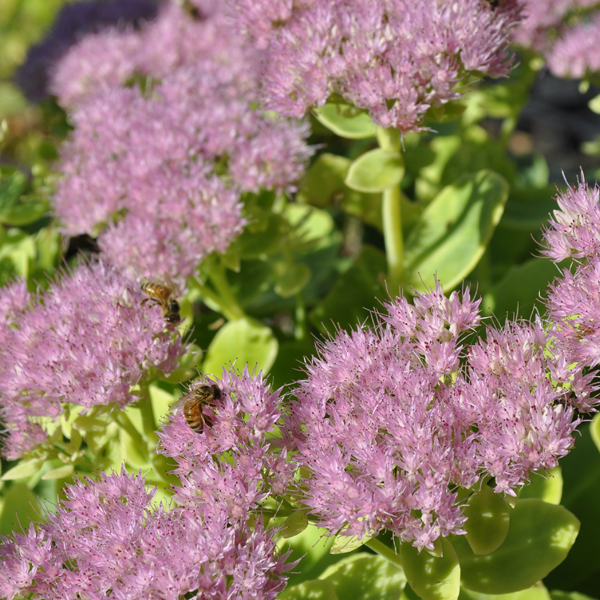
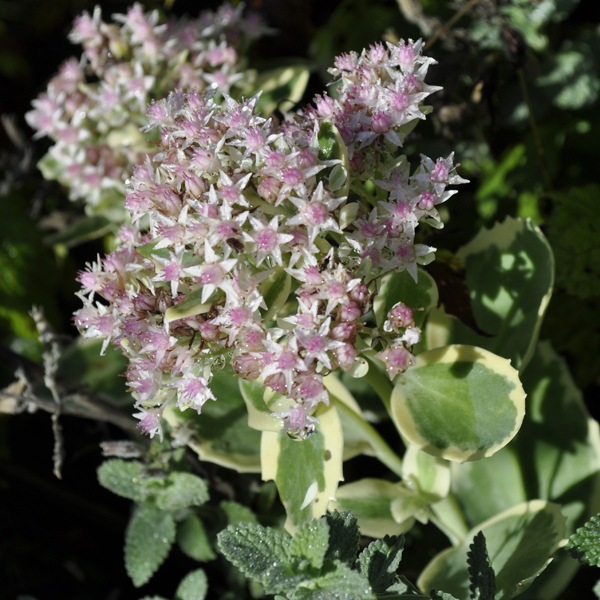
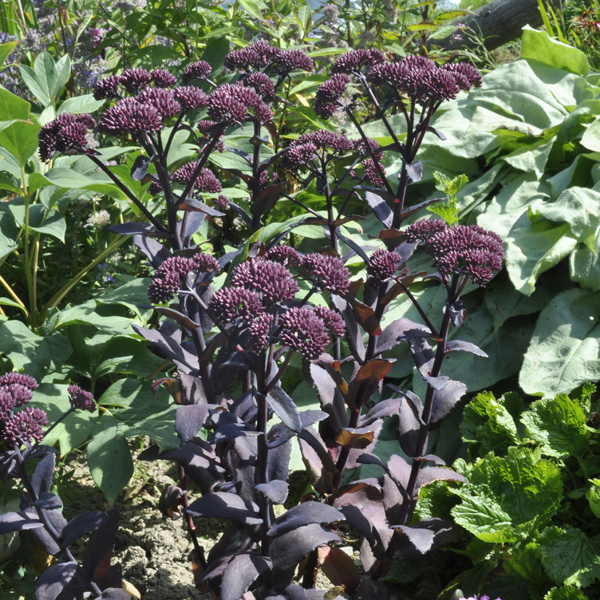
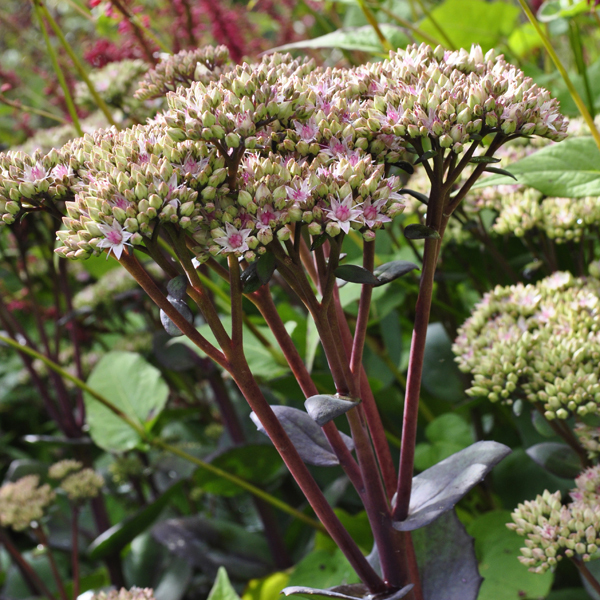
Left to right: Soft green leaves of Sedum spectabilis, variegated leaves of Sedum erythrostictum 'Frosty Morn', dusky purple leaves of Sedum 'Jose Aubergine', rich red leaves of Sedum 'Matrona'
Growing & Caring For Sedum
Sedum will grow in any soil that is not so wet it turns into a bog, but they are perfect for dry gardens. The one thing they do command, however, is as much sun as possible. The flower heads of Sedum can be so big that they can tumble over. This tends to happen as the plant ages, therefore its best to divide these types every 3 or so years. Otherwise, the only job required to cut back the old foliage before new shoots appear. As the old flower heads can be attractive throughout winter, this is best done as spring approaches.
What to Grow With Sedum
They blend with almost all other perennials, providing wonderful contrast when planted next to more fluffy plants such Aster or Sanguisorba. Others are quite short and are lovely at the front of a border. I don’t cut back taller varieties until spring as they leave a lovely skeleton of stems and flower heads that adds much to a winter garden. They prefer poor soils, in rich one the plant can become so lush the stems can topple side ways making the plant rather lax. In these situations some people cut the plant when it has half grown (around May) to create a shorter, more stable clump.
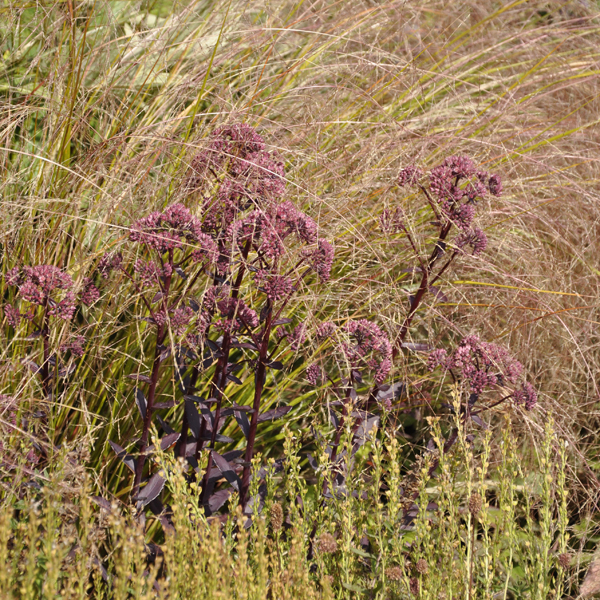
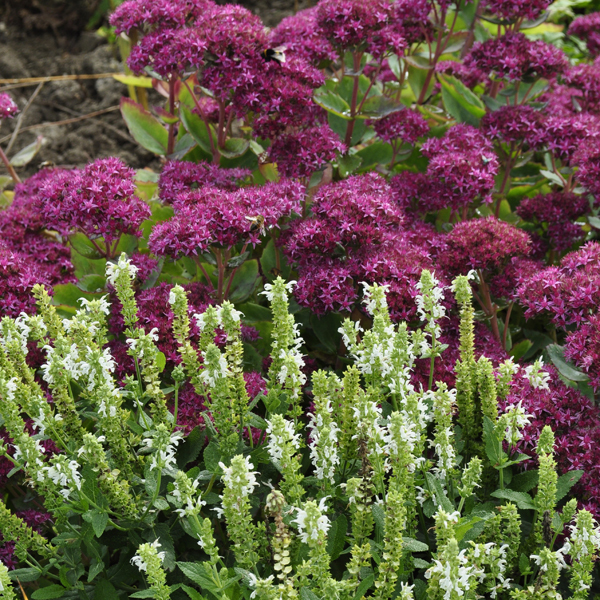
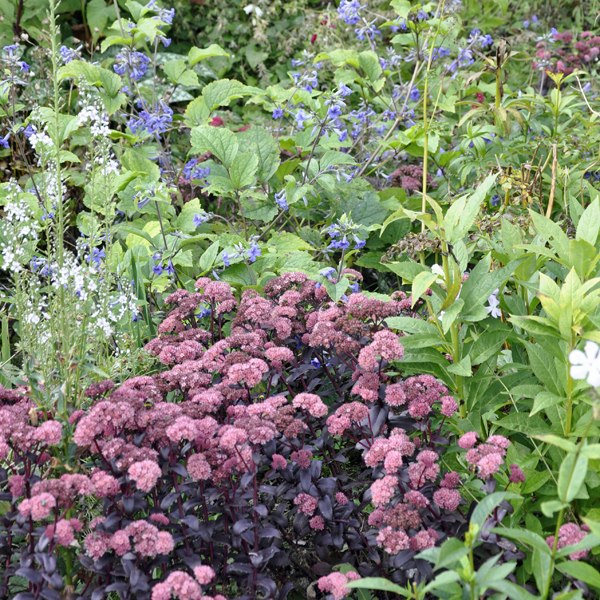
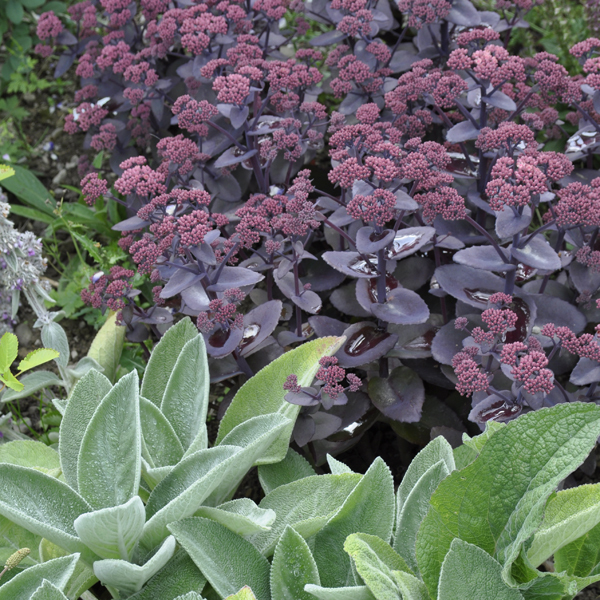
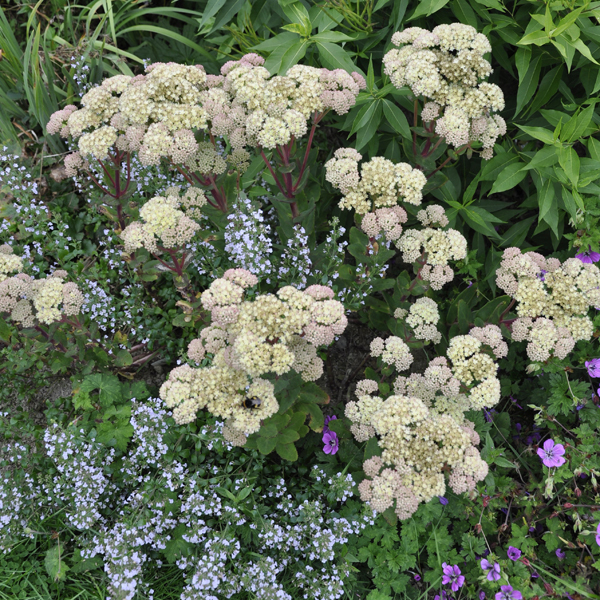
Left to right: Sedum telephium 'Purple Emperor' with Anemanthele lessoniana, Sedum 'Abbeydore' with Salvia x sylvestris 'Schneehugel', red-leaved sedum as distinct form to a cottage-style border, Sedum 'Xenox' and Stachys byzantina 'Big Ears'
